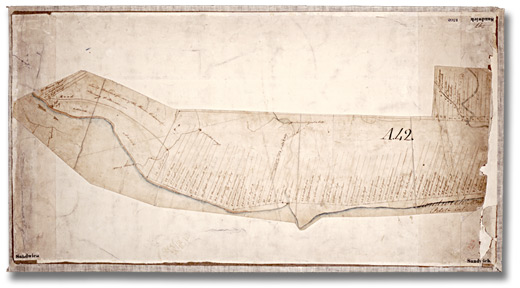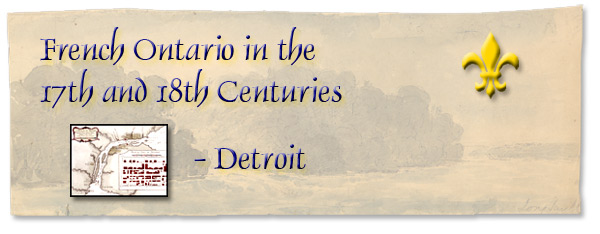
Table of Contents
Making Contact | Transitions | Resources and Trade
People, Places and Times | War and Defence | To Learn More
|
Few French lived permanently in the interior. The St. Lawrence Valley was far more attractive to farmers than the posts of the pays d’en haut because of their isolation and colonial policies that discouraged settlement west of the Montreal area. However, some disbanded soldiers or retired voyageurs settled near the most important forts, such as Fort Frontenac, Michilimakinac and Fort Niagara. Although seigneuries were created, these communities had no more than a few families. Detroit was the exception. |
|
|||
|
|
||||
|
The site of Detroit offered many benefits for the French from a strategic and commercial point of view. The commander of Michilimakinac, Antoine Laumet de Lamothe Cadillac, convinced the French government to establish a fort and settlement and, in 1701, he arrived at Detroit with a small group of settlers and soldiers. They built a small fort that Cadillac named Pontchartrain after the French minister responsible for colonies. The following year, the first French women in the interior joined the settlement. Another group of settlers arrived in 1706. |
||||
|
||||
|
Life in Detroit was hard for the first few years and few settlers came. First Nations groups were invited to establish villages near the settlement, but this exacerbated ongoing conflicts and led to new ones. They were also encouraged to bring their furs to Detroit instead of using more northerly routes, but this inadvertently helped the British by making it easier for British merchants on the upper Ohio River and the Iroquois to trade with the western nations, which hurt the commerce in Detroit. In New France authorities were concerned with these problems and thought the settlement would fail. But Detroit managed to survive its difficult beginnings and its importance as a trading and military post grew steadily, largely as a result of the increased strategic role of the French in the lower Great Lakes area and a stronger French military presence in the interior. Missions were established in neighbouring First Nations villages, which increased Detroit's importance. Fur merchants and retired soldiers also contributed to the town’s population growth, and its farms produced enough food to supply some of the outlying posts. By mid-century, Detroit had become well established as one of the main fur trading posts in the interior and as an important base of operations for the French military. |
||||
|
|
||||
|
In 1749, French authorities decided to increase the population of Detroit for strategic reasons: a large agricultural colony could supply all the posts of the interior, while a strong military presence would reinforce the French position in the Lower Great Lakes and Upper Mississippi. The Crown offered free land, farm equipment and transportation to families willing to move to Detroit. Louis Gervais was one of the settlers who came from the Montreal area to Detroit in 1749. This certificate signed in 1766 by local notary Robert Navarre, states that Gervais was granted land by the King and had paid all annuities since. |
|
|||
|
|
||||
|
|
The white population increased from less than 500 in 1750 to more than 800 in 1765. Detroit had become the largest town between Montreal and New Orleans. Some of the new concessions were located at the “Petite côte”, on the south shore of the Detroit River, opposite Fort Pontchartrain. This site would eventually become part of Windsor, Ontario. This 1764 map shows the Detroit River, the cultivated lands on both sides of the river, First Nations villages as well as a detailed view of the fort, which had in fact become a small town. |
|||
|
|
||||
|
The British acquisition of New France (1763) marked the beginning of three decades that would profoundly change the Detroit area. First Nations of the interior opposed British rule and the end of French trading practices that had favoured them. In 1763, Detroit successfully resisted a siege by a coalition of First Nations led by Pontiac, a leader of the Ottawa nation . Over the following decades, First Nations which had settled in the missions near Detroit sold some of their lands and would eventually move to reservations. |
|
|||
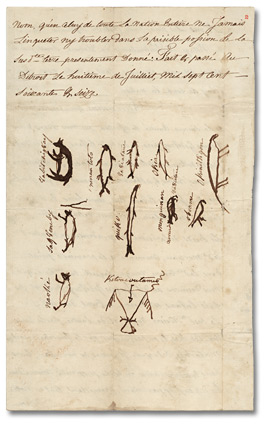 Click to see a larger image (133K) |
||||
|
Land deed, Pottawatomi Nation to Jacques Godefroy, 1776 |
||||
|
|
||||
|
The Canadiens had to contend with a foreign administration and system of laws. As well, British administrators, farmers and traders moved to Detroit and competed for local dominance. However, the Canadiens continued to play an important role in trade and in local administration thanks to their relationship with the First Nations and alliances with prominent British families. The American Revolution (1775-1783) and the Second Treaty of Paris, which ended it, had tremendous effects on Detroit. A new border separated Detroit, now an American city though still occupied by British troops, from the settlement at Petite côte (renamed Sandwich) which remained British. Loyalists moved to British possessions, including Sandwich, leading to the creation of Upper Canada in 1791. |
||||
|
By then, the land situation was complex. British land grants to Loyalists were not always properly documented, and the terms of some of the land transactions with First Nations were unclear. Some Canadien farmers could not produce written proof of their legal entitlement to their land. The Hesse District Land Board, which was appointed in 1789 to handle land issues in an area including Sandwich and Detroit, obtained in 1791 a copy of a register of French regime grants, which it included in its records. This register, reproduced to the right and below, enabled many farmers to prove ownership. |
![Register, Land Board, District of Hesse, No. 2 (1790-1792), p. 258-264 [Page 258]](pics/rg_1_178_0_2_258_270.jpg) Click to see a larger image (178K) |
|||
|
Register, Land Board, District of Hesse, No. 2 (1790-1792), p. 258-264 |
||||
|
|
||||
|
These two surveyor plans show land ownership in parts of Sandwich at the time. Canadien and British farmers were neighbours, and lots were the long, narrow, river-fronted strips characteristic of the St. Lawrence Valley instead of the square British lots found elsewhere in Upper Canada. |
|
|||
|
|
||||
|
The Jay's Treaty (1794) formally ended British occupation of Detroit and other forts of the interior. The Americans took possession of the town in 1796. Many of the prominent families of Detroit moved across the river to Sandwich. |
||||
|
Previous | Home | Next |
||||
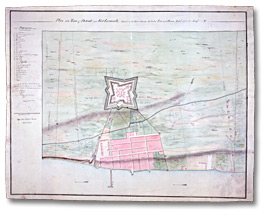

![Relation du Détroit, extraite d’une lettre écrite à Monsieur De Pontchartrain, [1683?] - Page 1](pics/f_1080_mu_2414_1_520.jpg)
![Relation du Détroit, extraite d’une lettre écrite à Monsieur De Pontchartrain, [1683?] - Page 2](pics/f_1080_mu_2414_2_180.jpg)
![Relation du Détroit, extraite d’une lettre écrite à Monsieur De Pontchartrain, [1683?] - Page 3](pics/f_1080_mu_2414_3_180.jpg)
![Relation du Détroit, extraite d’une lettre écrite à Monsieur De Pontchartrain, [1683?] - Page 4](pics/f_1080_mu_2414_4_180.jpg)

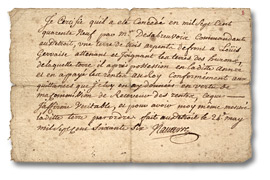
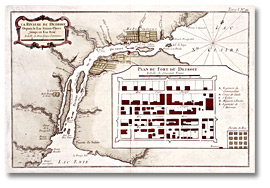

![Drawing: Plan of elevation for a building for the reception of Indians at Detroit submitted to His Excellency Lieutenant Governor Simcoe, [ca. 1790]](pics/5434_reception_bldg_270.jpg)
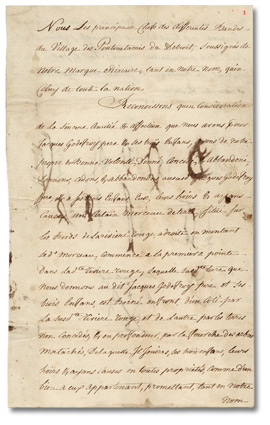
![Register, Land Board, District of Hesse, No. 2 (1790-1792), p. 258-264 [Page 259-60]](pics/rg_1_178_0_2_259_60_270.jpg)
![Register, Land Board, District of Hesse, No. 2 (1790-1792), p. 258-264 [Pages 261-62]](pics/rg_1_178_0_2_261_62_270.jpg)
![Register, Land Board, District of Hesse, No. 2 (1790-1792), p. 258-264 [Pages 263-64]](pics/rg_1_178_0_2_263_64_250.jpg)
![McNiff, P. Township plan, Sandwich, [179-]](pics/ao6701_map_sandwich_270.jpg)
